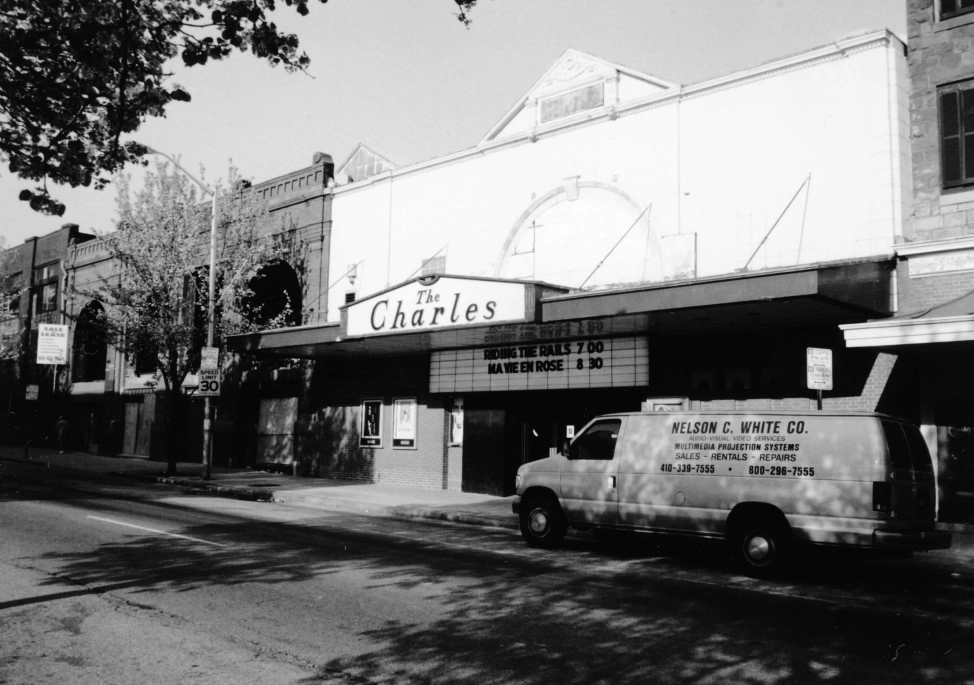Share what you know,
and discover more.
Share what you know,
and discover more.
Sep 09, 1998

-

- Charmaine Bantugan
National Register of Historic Places - Baltimore City Passenger Railway Power House and Car Barn
Statement of Significant: The Baltimore City Passenger Railway Power House and Car Barn, built in 1892, meets National Register Criterion A because of its locally significant association with the development of Baltimore's streetcar system. Constructed by Baltimore's oldest streetcar company to provide cable traction on one of its first and most important lines, the building marks the technological and political struggle to develop a mechanical alternative to horse powered cars in a competitive marketplace. Occupying a critical location at the confluence of several major arterial routes, the Baltimore City Passenger Railway power house and car barn is an important artifact of the competitive struggles that preceded consolidation of the street railway system into United Railways in 1899. The car barn was the node where the Baltimore & Northern Railway transferred its streetcars to City Passenger tracks. The N. Charles Street structure provided the foothold for Baltimore & Northern's surprising triumph in achieving a monopoly on Baltimore's trolley services as United Passenger Railways. In 1939 United Railways sold the structure. It was then converted into a movie theater, bowling alley, and ballroom. Although the façade has been altered, the building still retains sufficient architectural fabric to convey its original identity.
National Register of Historic Places - Baltimore City Passenger Railway Power House and Car Barn
Statement of Significant: The Baltimore City Passenger Railway Power House and Car Barn, built in 1892, meets National Register Criterion A because of its locally significant association with the development of Baltimore's streetcar system. Constructed by Baltimore's oldest streetcar company to provide cable traction on one of its first and most important lines, the building marks the technological and political struggle to develop a mechanical alternative to horse powered cars in a competitive marketplace. Occupying a critical location at the confluence of several major arterial routes, the Baltimore City Passenger Railway power house and car barn is an important artifact of the competitive struggles that preceded consolidation of the street railway system into United Railways in 1899. The car barn was the node where the Baltimore & Northern Railway transferred its streetcars to City Passenger tracks. The N. Charles Street structure provided the foothold for Baltimore & Northern's surprising triumph in achieving a monopoly on Baltimore's trolley services as United Passenger Railways. In 1939 United Railways sold the structure. It was then converted into a movie theater, bowling alley, and ballroom. Although the façade has been altered, the building still retains sufficient architectural fabric to convey its original identity.
Sep 09, 1998
National Register of Historic Places - Baltimore City Passenger Railway Power House and Car Barn
Statement of Significant:The Baltimore City Passenger Railway Power House and Car Barn, built in 1892, meets National Register Criterion A because of its locally significant association with the development of Baltimore's streetcar system. Constructed by Baltimore's oldest streetcar company to provide cable traction on one of its first and most important lines, the building marks the technological and political struggle to develop a mechanical alternative to horse powered cars in a competitive marketplace. Occupying a critical location at the confluence of several major arterial routes, the Baltimore City Passenger Railway power house and car barn is an important artifact of the competitive struggles that preceded consolidation of the street railway system into United Railways in 1899. The car barn was the node where the Baltimore & Northern Railway transferred its streetcars to City Passenger tracks. The N. Charles Street structure provided the foothold for Baltimore & Northern's surprising triumph in achieving a monopoly on Baltimore's trolley services as United Passenger Railways. In 1939 United Railways sold the structure. It was then converted into a movie theater, bowling alley, and ballroom. Although the façade has been altered, the building still retains sufficient architectural fabric to convey its original identity.
Posted Date
Aug 13, 2023
Historical Record Date
Sep 09, 1998
Source Name
National Register of Historic Places
Source Website
Delete Story
Are you sure you want to delete this story?



















